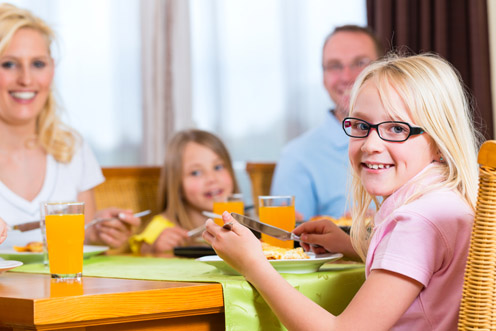5 Steps to Better Table Manners

Family meals can strike angst into the hearts of parents everywhere. It would be so nice for the children to sit at the table and act politely, especially if the in-laws are visiting from out of town. We are often asked, ‘How do I keep my children seated at the table?’ or ‘What can I do to keep my son from spitting Grandma’s Brussels sprouts onto the table?’.
While kids are not born with manners and certainly don’t gain them by osmosis, they do learn them from those around them. Deciding upon the etiquette that is important to your family is a great place to start. Clarifying and teaching it to the children comes next. With this preparation, you can decrease some of the spills and embarrassment at the dinner table, resulting in a more pleasant time for all.
Here are five of Parenting Power’s’¢ suggestions to get you to that point:
- Model manners that you would like your children to adopt:
- Leaving forks on the table when not eating with them
- Thanking the chef for the food
- Keeping the ‘yuck’, ‘Gross’ and ‘I hate that’ comments in your head
- Learning how to have one taste and then say, ‘No thank you.’
- Explain your expectations to the children and teach them ahead of time.
A fun way to do this is by having some practice sessions of pretend dinners and tea parties. - Keep your expectations realistic.
Children under 2 probably won’t stay at the table for a long time after eating without causing quite a fuss. Older children can be expected to stay longer and can wait for their same-age peers to finish. - Involve the children in the dinner conversation.
It is pretty boring when all the talk is about finance and gossip when all you know is that Hot Wheels cost $1.69 and that Suzy got moved for talking in class today. - Involve the children in the preparation.
Setting the table, making place cards or even preparing a portion of the dinner are all activities that can help the child to participate in and anticipate the special qualities of the meal.















